Among many types of rice consumed worldwide, Basmati rice is nowadays one of the most prominent types. To make use of the health benefits of Basmati rice and get some delicious recipes to cook it, read the following information
Basmati rice: An overview
Basmati rice is so popular that you can find it almost everywhere around the world. But do you really know the meaning behind its name and how to choose among many types of Basmati rice? Read the following information to get useful information about it.
Definition of Basmati rice
Basmati rice, which means “full of fragrance” in Hindi, is cultivated in the foothills of the Himalayas in northern India and Pakistan. There are also some other varieties that are grown in the U.S. In India, it has been cultivated for centuries and is widely considered to be one of the finest types of rice in the world. Its distinct aroma and flavor come from the specific soil and climate conditions in which it is grown, as well as the traditional methods used in its cultivation and processing. Later traders introduced this fragrant rice to the Middle East. Since then, it has become popular in Middle Eastern and Persian dishes as well.
Basmati rice is long, slender, and aromatic. After being cooked, Basmati rice is dry, fluffy, and also has a nutty flavor, pleasant aroma.
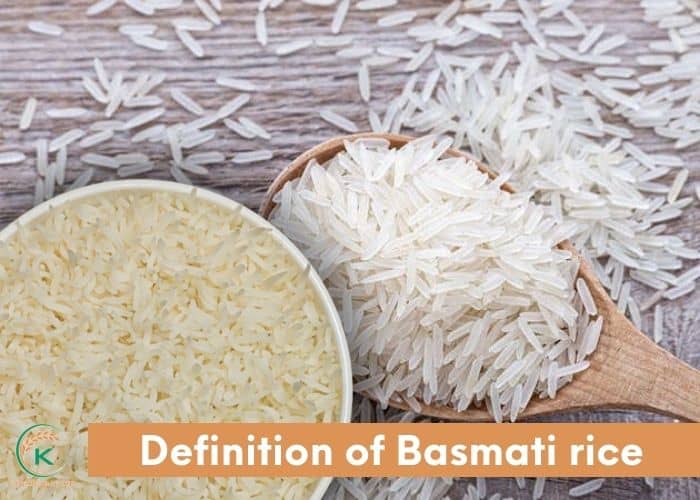
Types of Basmati rice
Basmati rice can be categorized by its origins or its features. In terms of origins, there are two major types of Basmati rice produced by two leading countries in cultivating it: India and Pakistan.
- India Basmati rice.
India is the major country exporting Basmati rice on the global market, making it the homeland for many Basmati rice exporters. The frequent Basmati rice from India are: Basmati 370, the R.S. Pusa Basmati, and Basmati 385.
The Indian Basmati rice is fragrant, flavourful, and considered to be the most delicious Basmati rice in the world.
Colour: Basmati rice has translucent, creamy white color. There is also brown Basmati rice but the most commonly used is white Basmati.
Grain: Basmati is a variety of long-grain rice. The grain is long (6.61 – 7.5 mm) or very long (more than 7.50 mm and 2 mm breadth).
Shape: Shape is another feature to identify basmati rice. This needs to be over 3.0 in order to qualify as basmati rice
Texture: Basmati rice is dry, firm, separate grains. After being cooked, Basmati rice is firm and tender without splitting, and it is non-sticky.
Elongation: The Basmati rice elongates almost twice upon cooking but does not fatten much. When cooked the Basmati grains elongate (70-120 % over the pre-cooked grain) more than other varieties.
Flavor: Basmati rice has a distinctive fragrance. The most special characteristic of them all is the aroma. Incidentally, the aroma in Basmati arises from a cocktail of 100 compounds — hydrocarbons, alcohols, aldehydes, and esters. A particular molecule of note is 2-acetyl-1-pyrroline.

- Pakistan Basmati rice
Besides India, Pakistan is also well-known for producing Basmati rice. D-98, PK 385, and Super Kernel Basmati Rice are three types of Basmati rice that Pakistan supplies on the market. Having many shared features but the Basmati rice from Pakistan is considered to be more aromatic, flavourful, and has higher quality so usually, it is sold at a higher price than India Basmati rice.
Looking into its characteristics, here are some popular types of basmati rice are:
- Traditional Basmati rice: The original type of Basmati rice is the Traditional Basmati rice, which is cultivated in the foothills of the Himalayas. It is renowned for its long grain, delicate aroma, and light and fluffy texture, which make it perfect for biryani, pilaf, and other dishes that call for a light and fluffy rice grain.
- Organic Basmati rice: is cultivated using pure river water and is produced in accordance with rigorous international organic food standards. This type of rice has a high amylose content, making it a low glycemic index (GI) food. The long and slender grains of Organic Basmati rice fluff out and separate easily during the cooking process, giving it a delightful texture.
- Brown Basmati rice: It is a minimally processed whole-grain variety of Basmati rice that maintains its bran layer and germ, making it a nutritious option compared to white Basmati rice. It is abundant in fiber, vitamins, and minerals and has a nutty flavor and firm texture, making it ideal for use in salads, stir-fries, and other dishes that require a chewier consistency.
- Aromatic Basmati rice: The distinctive fragrance of Basmati rice is renowned, attributed to the aging process of several months. Through this process, the rice’s flavor and aroma are developed, making it an excellent choice for preparing aromatic dishes like pulao, biryani, and other similar rice dishes.
- Sella Basmati rice is a parboiled variety of Basmati rice that undergoes a steam treatment before milling. This process helps to maintain the rice’s nutritional content and gives it a firm texture. Sella Basmati rice is frequently used in preparing biryanis and other rice dishes that require a firmer consistency.
- Parboiled Basmati rice: is a type of Basmati rice that undergoes a partial boiling process before milling. This technique helps to maintain the rice’s nutritional value and gives it a firmer texture. Parboiled Basmati rice is often used in preparing biryanis and other rice dishes where a firmer texture is desired.
- Premium Basmati rice is a top-quality type of Basmati rice that is meticulously handpicked for its long grains, gentle aroma, and airy and fluffy texture. It is typically aged for several months, allowing its flavors and fragrance to mature fully. Premium Basmati rice is an ideal option for dishes such as biryani, pilaf, and other rice-based dishes that demand a light and delicate grain.
Basmati rice: Nutritional facts
Basmati rice is a great source of nutrients. One cup (163 grams) of cooked white basmati rice contains

With this amount of nutrition, Basmati rice is regarded to be the top nutritious rice in the world.
Basmati rice vs Jasmine rice
Basmati rice and Jasmine rice are the two most popular rice consumed in the world. However, each type of rice has distinctive characteristics.
In comparison with Jasmine rice, Basmati rice is cultivated in the Himalayas, India, and Pakistan while Jasmine is produced mainly in Thailand, Cambodia, Laos, and Vietnam. In addition, after being cooked, basmati keep their slender shape and almost double in length. Whereas in contrast, Jasmine rice forms small sticky clusters where the grains have clumped together slightly. Moreover, Basmati rice has a more fragrant aroma and a nuttier taste.
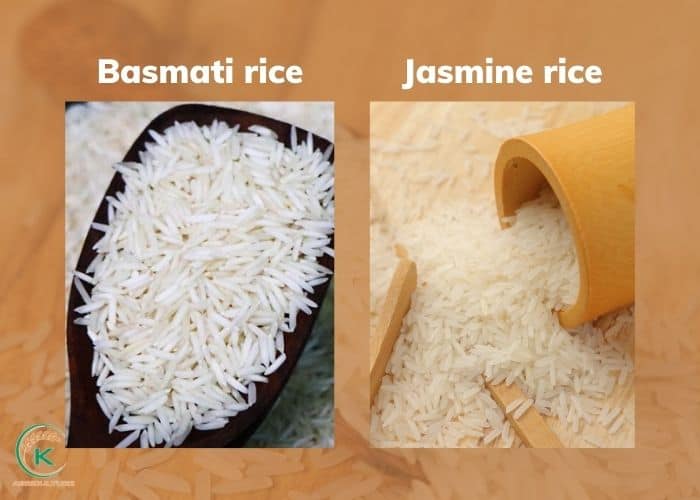
Basmati rice: Health benefits
Not only delicious, but Basmati rice also has many health benefits that people can get when eating it.
- Good for diabetics
Many people believe that people with diabetes should get rid of rice in their daily meals because normal rice contains a great amount of glycemic index (GI), which can cause a sudden spike and dip in blood sugar levels. However, basmati rice has a low level of (GI), from 50 to 58. Thus, diabetics can eat Basmati rice in small portions.
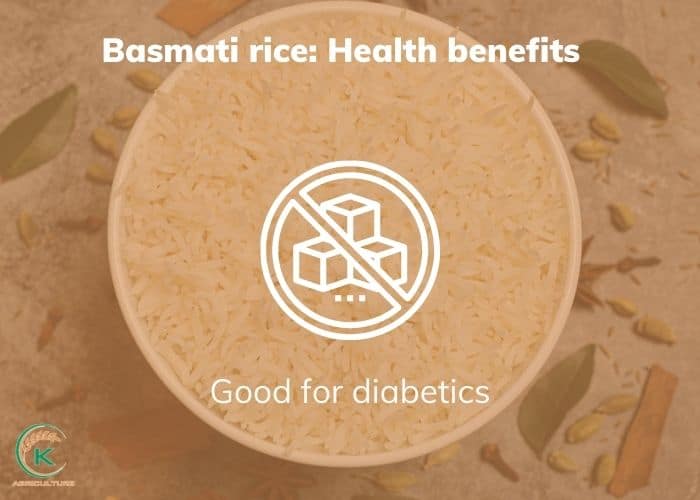
- Good for the brains
Basmati rice has a great amount of Vitamin B, including thiamine (B12). Eating just one serving of Basmati rice can help you absorb around 22% of your daily diet recommendation of this vitamin. Thiamine is vital for brain health. Lacking Thiamine can cause Wernicke encephalopathy, a dangerous condition for the central and peripheral nervous system.

- Rich in fiber
Basmati rice contains a high level of fiber. A diet that is rich in fiber can reduce the risk of type 2 diabetes and strengthen bowel movements. The amount of fiber in Basmati rice can add bulk and assist the movement of waste in the digestive tract.

- Reducing the threat of cancer
Basmati rice, as mentioned above, contains a lot of fiber, which is also linked to reducing the risk of many types of cancer, especially colorectal cancer. With 3 ounces of Basmati rice in your daily diet, you can reduce the risk of having cancer by around 17%.

- Reducing the threat of heart disease
Brown basmati rice is included in the category of whole grains, which are considered to lower the risk of heart disease and have a low level of cholesterol. It can also mitigate the threat of high blood pressure or hypertension.
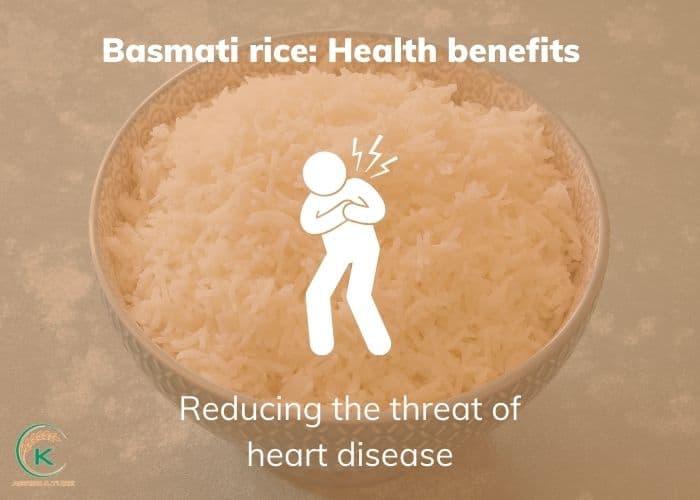
How to cook Basmati rice
It’s really easy to cook Basmati rice. Here is a simple guide to cooking appetizing Basmati rice.

Step 1: Add 1 cup of Basmati rice to a bowl and cover it with water. Soak the rice in 20 minutes.
Step 2: Drain the water in the bowl and rinse Basmati rice with cold water. Add 2 cups of water to one cup of dry basmati rice to the pan.
Step 3: Boil and simmer the Basmati rice for 10-12 minutes. Open the lid and leave it boiling for 5 minutes later.
Step 4: Gently fork through the cooked grains and then serve them.
Some dishes to eat with Basmati rice
Basmati rice is an indispensable part of many cuisines from India and Pakistan. Here are some delicious dishes to eat with Basmati rice.
- Basmati rice With Chicken
You can pair the cooked Basmati rice with spicy chicken gravy and serve with vegetables on the side. You can also grill or stir fry or chicken when the Basmati rice is cooked and pair the two for an appetizing meal.

- Basmati Rice With Turmeric and Coconut
The recipe to cook this dish is really simple.
Heat oil in a pan and fry chopped onions, garlic, and ginger, with salt for a few minutes. Add in the pan turmeric powder and Basmati rice, mix them well. Add coconut milk and water to the pan and let the Basmati rice cook for about 18 minutes. Finally, you have a scrumptious dish to eat.

- Lemon Basmati rice
Lemon Basmati Rice is a delicious Basmati rice recipe that will definitely explode with flavor in your mouth. Here is how this Basmati rice dish is cooked. First, fry chana dal and urad dal in oil for some minutes. Add in salt, turmeric powder, Basmati rice, and water. Mix them well and add in the lemon juice. Fry until the Basmati rice is fragrant and take this off the stove
You can also add roasted peanuts to create more texture to the dish!
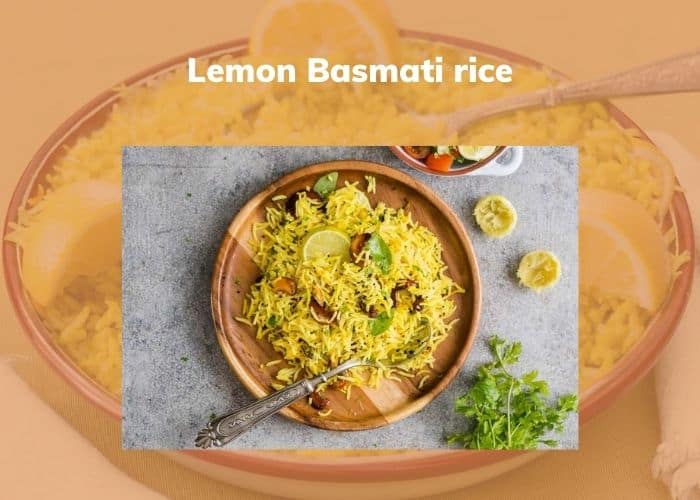
K-Agriculture Factory was established in 1996 with the aim of bringing the best agricultural products from Vietnam to many destinations around the world such as the USA, the EU, Dubai, China, etc. Many customers are satisfied with the high quality of wholesale rice, coffee, and spices from K-Agriculture.
For the best discount and free consultation, contact us now via
Email: info@k-agriculture.com
WhatsApp: +84855555694 (Ms. Evelyn – sales manager)
